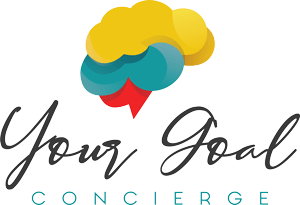Why High Achievers Self-Sabotage and How to Break the Cycle
Erica Kesse
Success isn’t just about intelligence, skill, or opportunity. If it were, more people would be thriving. Yet, time and time again, I see highly capable individuals stalling their own progress—not because they aren’t good enough, but because something deeper is at play.
They procrastinate. They overthink. They fill their time with low-impact work while avoiding the actions that truly move them forward.
And the most common conclusion they reach?
"Maybe I’m just not meant for this."
But that belief couldn’t be further from the truth. The real issue isn’t external—it’s internal. It’s the mindset, patterns, and unconscious fears that shape our behaviors and decisions.
Let’s explore why this happens and, more importantly, how to overcome it.
The Psychology of Self-Sabotage
Self-sabotage is a protective mechanism—a way our minds attempt to keep us safe. The problem? Safety and success don’t always go hand in hand.
For many, past experiences (whether childhood conditioning, workplace failures, or personal disappointments) shape their relationship with success. These experiences create patterns of avoidance, perfectionism, and fear, which show up in five common ways:
1. The Overworker (Fight Mode)
Some people react to stress by pushing through at all costs. They work longer hours, micromanage, and refuse to delegate. This response feels productive, but often leads to burnout and exhaustion.
What to do: Learn to trust others, delegate tasks, and recognize that rest is not the enemy of success—it’s a necessity for sustainable growth.
2. The Avoider (Flight Mode)
Others escape challenges by avoiding risk, delaying decisions, or shifting focus to less important tasks. They might endlessly prepare, research, or "wait for the perfect time," only to realize they never truly start.
What to do: Instead of waiting for confidence, take small, uncomfortable steps forward. Action creates clarity, not the other way around.
3. The Overthinker (Freeze Mode)
Analysis paralysis is real. Some people get stuck weighing every option, fearing the wrong move will lead to failure. Their mind is busy, but they take little action.
What to do: Set a deadline for decisions. Done is better than perfect, and progress is better than stagnation.
4. The Burnout Victim (Flop Mode)
When overwhelmed, some leaders and entrepreneurs shut down entirely. They disengage, feel unmotivated, and struggle to find the energy to push forward.
What to do: Recognize when your body and mind are signaling exhaustion. Instead of forcing productivity, focus on recovery, mindset shifts, and strategic adjustments.
5. The People-Pleaser (Fawn Mode)
Some individuals avoid conflict and discomfort by prioritizing others’ needs over their own. They say yes when they mean no, struggle with boundaries, and fear disappointing people.
What to do: Understand that success requires healthy boundaries. Learning to say no is just as important as knowing when to say yes.
How to Move from Self-Sabotage to Thriving
Recognizing these patterns is the first step. The next step is rewiring your approach to success. This means:
- Identifying mental blocks that keep you from scaling your business, career, or personal growth.
- Developing emotional resilience and learning how to navigate stress effectively.
- Aligning your actions with your mission, so every step you take has purpose and impact.
- Using practical tools and strategies to shift from surviving to thriving.
This is what I help people do every day. As a Thrive Strategist and On-Demand Social Support System, I work with leaders, entrepreneurs, and organizations to break through their self-imposed limitations and operate from a place of clarity and confidence.
If you’ve been running full speed but still feel stuck, it’s not because you aren’t meant for success. It’s because something in your approach needs to change.



